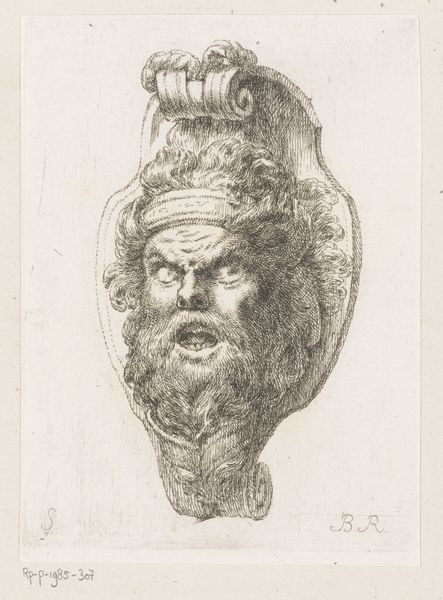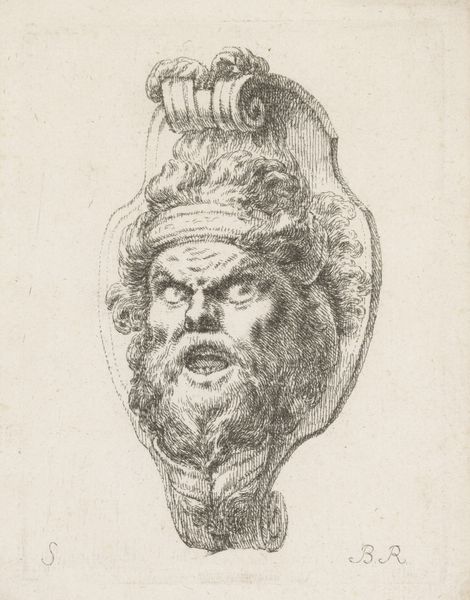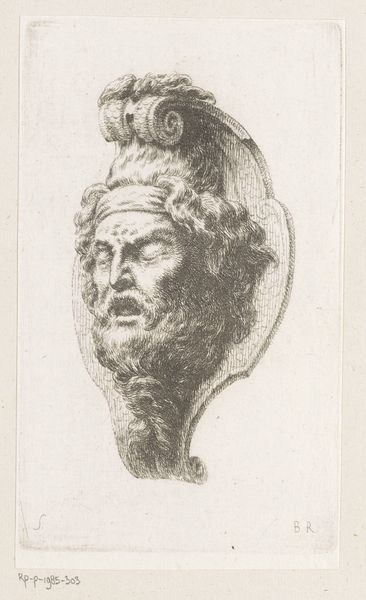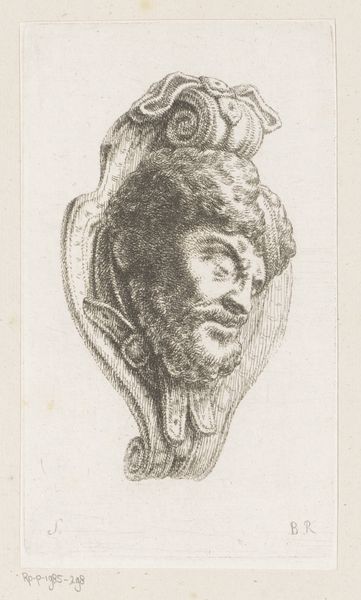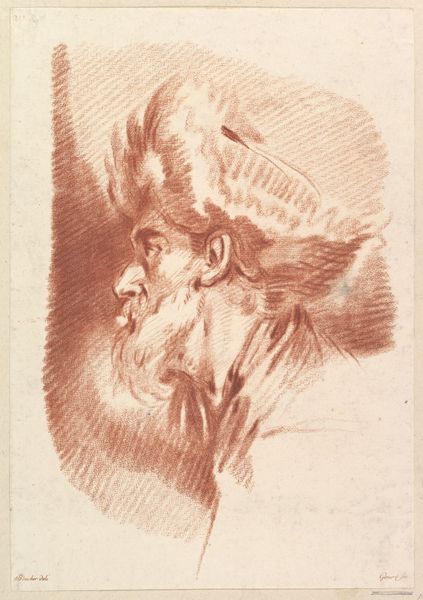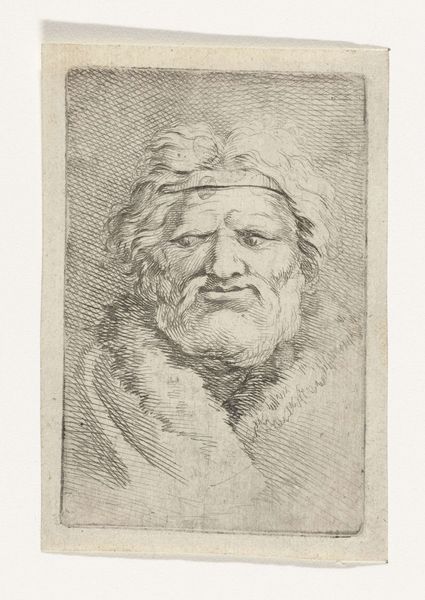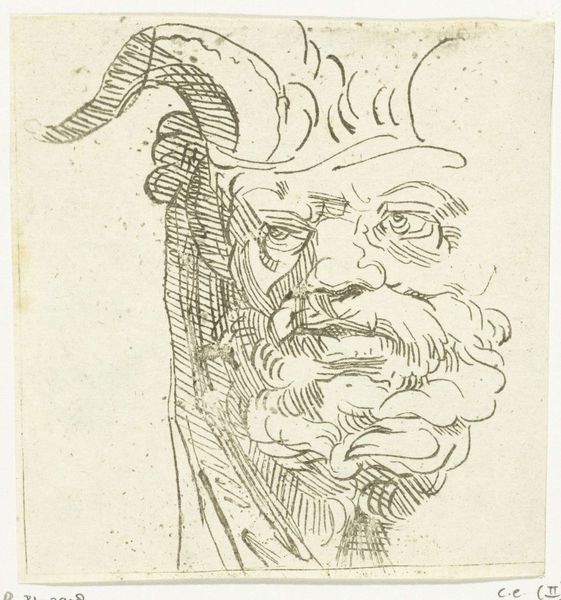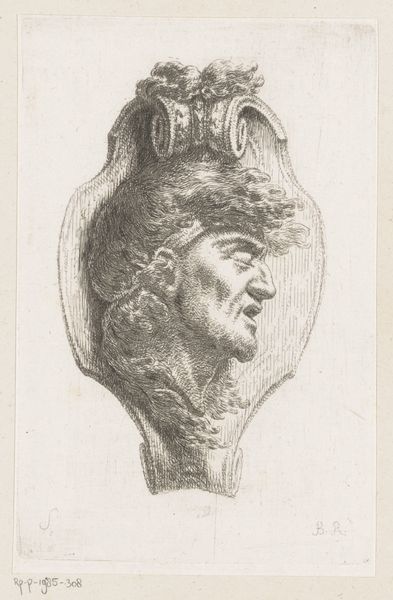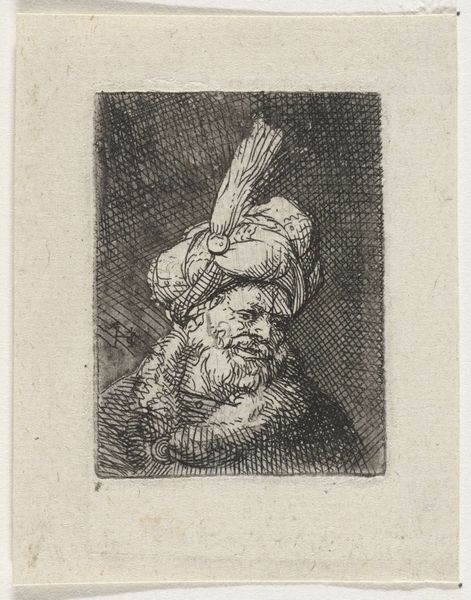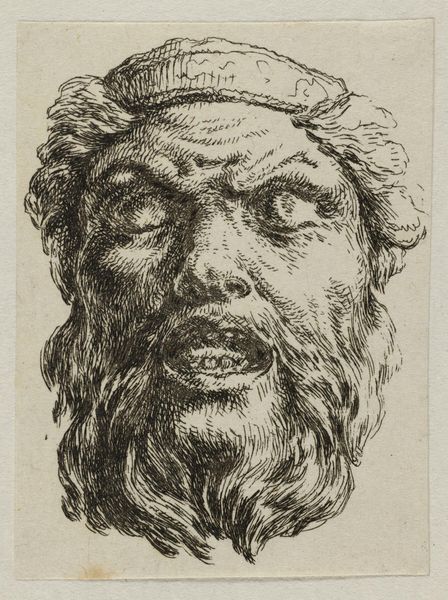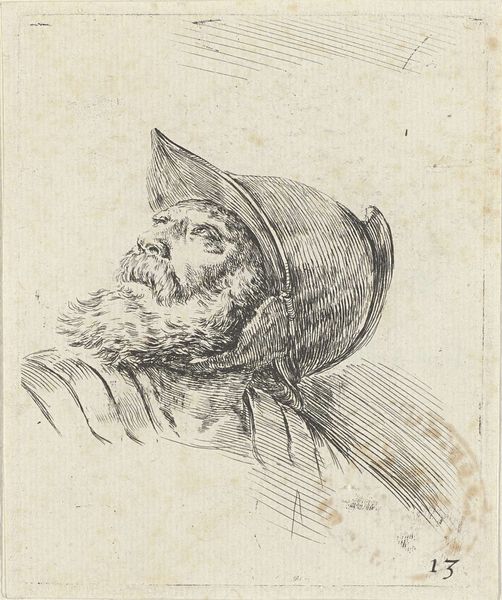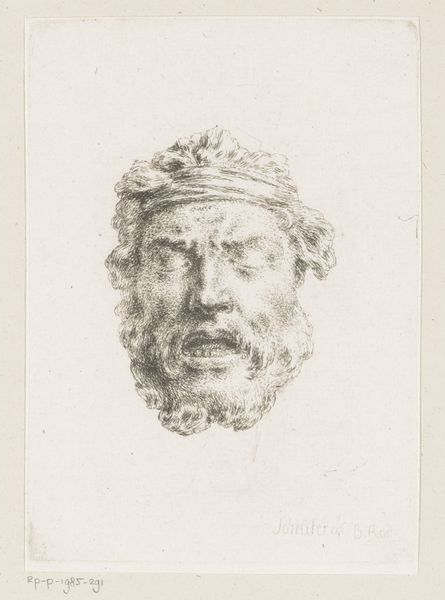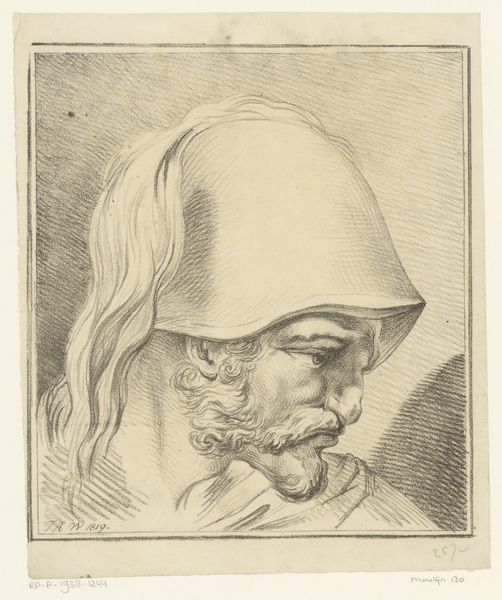
drawing, print, engraving
#
portrait
#
pencil drawn
#
drawing
#
baroque
# print
#
pencil sketch
#
charcoal drawing
#
pencil drawing
#
pen-ink sketch
#
portrait drawing
#
pencil work
#
engraving
Dimensions: height 179 mm, width 115 mm
Copyright: Rijks Museum: Open Domain
Christian Bernhard Rode created this etching of a mascaron with a man’s head sometime in the 18th century. Mascarons were architectural ornaments, often grotesque faces, used to ward off evil spirits, or simply to decorate buildings. Made in Germany, this image reflects the period's fascination with classical antiquity and its revival in contemporary architecture. The bearded man, with his intense gaze, may be a reference to the ancient Roman or Greek gods, who were often depicted with beards as a symbol of wisdom and power. The image presents this masculine ideal as an intrinsic and necessary element to ward off the barbaric unknown from the institutional edifice. Understanding Rode's artistic choices requires an examination of the social and cultural context of 18th-century Germany, for which we can consult architectural treatises, design books, and collections of prints, revealing the revival of classical motifs and their integration into the built environment. The meaning of art is never fixed, but always depends on its social and institutional context.
Comments
No comments
Be the first to comment and join the conversation on the ultimate creative platform.
